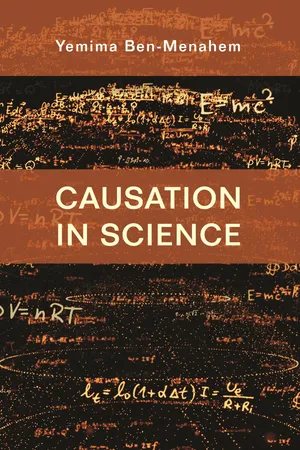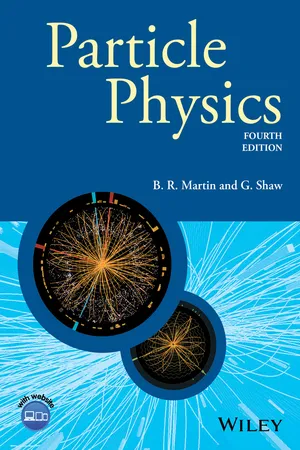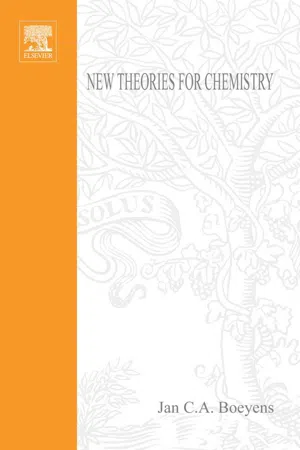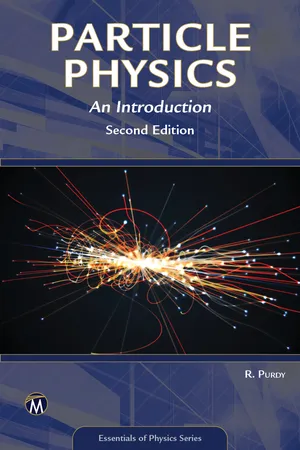Physics
Symmetry and Conservation Laws
Symmetry and conservation laws in physics refer to the fundamental principles that describe the behavior of physical systems. Symmetry principles, such as translational or rotational symmetry, provide insights into the underlying structure of physical laws. Conservation laws, like the conservation of energy or momentum, dictate that certain quantities remain constant over time, leading to a deeper understanding of the dynamics of physical systems.
Written by Perlego with AI-assistance
Related key terms
Related key terms
1 of 4
Related key terms
1 of 3
10 Key excerpts on "Symmetry and Conservation Laws"
- eBook - ePub
- Yemima Ben-Menahem(Author)
- 2018(Publication Date)
- Princeton University Press(Publisher)
Symmetries single out “privileged” operations, conservation laws single out “privileged” quantities or properties that correspond to these operations. Yet the specific connections between a particular symmetry and the invariance it entails are far from obvious. For instance, the isotropy of space (the indistinguishability of its directions) is intuitive enough, but the conservation of angular momentum based on that symmetry, and indeed, the concept of angular momentum, are far less intuitive. The connection between symmetries and conservation laws emerged gradually from reformulations of Newtonian mechanics by Euler, Lagrange, Hamilton, Jacobi, and others. 16 The notion of symmetry itself, however, only came to the fore with the development of group theory in the nineteenth century. So while in current formulations of physical theories, conservation laws are generally derived from symmetries, historically, conservation laws typically came first. Moreover, the assumption that some fundamental continuity must underlie change goes back even further. Observing the world around us, we notice various types of change and persistence. A rock on the beach seems to have been there forever, whereas a burning log turns into ash and smoke, the smoke ultimately vanishing into the air; rubbing our hands creates heat, but the heat dissipates quickly; a pendulum keeps swinging for a long time, but eventually stops, and so on. To the Greeks, who were puzzled by the variety of change, two extreme possibilities suggested themselves: the Parmenidean view, according to which change is illusory, and the Heraclitean view, on which change is ubiquitous and persistence illusory. Over the next two millennia various attempts were made to reach a compromise between these extremes: theories that endeavored to identify a few constant elements in an otherwise changing world - eBook - ePub
- A C Sharma(Author)
- 2021(Publication Date)
- CRC Press(Publisher)
4Transformations, Conservation Laws, and Symmetries
There would be no laws of physics without invariance principles. We rely on experimental results remaining the same from day to day and place to place. An invariance principle is intimately related to a conservation law and it reflects a basic symmetry. Analysis of various transformations makes the form of the laws involved invariant. For example, (i) the invariance of physical systems with respect to spatial translation (in other word that the laws of physics do not change with locations in space) gives the law of conservation of linear momentum. (ii) Invariance with respect to rotation gives the law of conservation of angular momentum. (iii) Invariance with respect to time translation gives the well-known law of conservation of energy. In quantum field theory, the gauge invariance of the electric potential and vector potential yields conservation of electric charge.4.1 Translation in SpaceIn the case of translation in space, it is important to notice whether the system is being translated by vector a or the coordinate axes are being translated by a, which would result in the opposite change in the wave function. Results for translating the wave function by + a would be the same as for translating the coordinate axes along with the apparatus and any external fields by − a relative to the wave function. These two equivalent operations are analogous to the time development in the Schrödinger picture and in the Heisenberg picture. In the Schrödinger picture, bras and kets change in time while operators do not. In the Heisenberg picture, operators develop with time while the bras and kets do not change. Therefore, there are two possible ways to deal with space translations: transform the bras and kets or transform the operators. We here consider the situation where bras and kets are transformed while operators are left unchanged. Let us consider a 1D case, where the translational is made by an operatorT ( a ) - eBook - ePub
- Anupam Garg(Author)
- 2012(Publication Date)
- Princeton University Press(Publisher)
Similarly, the laws are invariant under a translation of either space or time coordinates, i.e., they are the same for two observers who choose different origins for space or time. These invariances or symmetries are continuous, in that the amounts by which the frames are rotated or translated may be varied continuously, and they are basic requirements of any fundamental physical law. Each symmetry leads to a conservation law: time translation to energy conservation, spatial translation to momentum conservation, and rotation to angular momentum conservation. 1 In addition to the above symmetries, we find that (barring weak interaction effects) the laws of physics are also invariant under the discrete symmetries of space–time, namely, mirror reflection or parity, and time (or motion) reversal. In this section, we shall see how these symmetries are realized for electromagnetism. F IGURE 6.1. Equivalence of inversion, or parity, with rotoreflection. Suppose a particle is at point r moving with momentum p. A reflection in the xy plane (step 1), followed by a 180° rotation about the z axis (step 2) changes the position to − r and the momentum to − p. Let us first consider how mechanical quantities such as a particle’s position, momentum, angular momentum, etc., behave under these symmetries, starting with parity. The first point to note is that reflection in a mirror plane is equivalent to inversion of all coordinate and momentum components when it is combined with rotational symmetry, which we have already established. Consider a particle at r moving with a momentum p, as in fig. 6.1. We now perform a reflection in the xy plane, and follow it up with a 180° rotation about the z axis. Under these operations, the coordinates and momenta transform as In short, r → −r, p → −p. It is easier to deal with inversion of all coordinates, rather than only one, since one does not have to specify the orientation of the mirror plane - eBook - ePub
- Brian R. Martin, Graham Shaw(Authors)
- 2016(Publication Date)
- Wiley(Publisher)
5 Space–time symmetriesSymmetries and conservation laws are a constant theme in physics, and nowhere more so than in particle physics. In this chapter we concentrate on those laws that are associated with space–time symmetries and their applications in strong and electromagnetic interactions. Such conservation laws are particularly important in spectroscopy. In atomic physics, spectroscopy is a vital ingredient in understanding the structure of atoms in terms of nuclei and electrons, and it plays an analogous role in elucidating the internal structure of hadrons in terms of their constituent quarks. In both cases, each state in the spectrum has not only a specific energy but also well-defined values of ‘good’ quantum numbers associated with conserved observables, like angular momentum, whose quantum mechanical operators commute with the Hamiltonian of the system. In atomic physics these quantum numbers are crucial to understanding the degeneracies of the energy levels, their behaviours in the presence of electric and magnetic fields, and the selection rules that govern transitions between them. Conservation laws have an equally important place in hadron spectroscopy, and the first task in studying hadrons is to determine which are the appropriate conserved quantities and to measure their values for observed states.Some of the conservation laws discussed in this chapter – those for linear and angular momentum – are universal laws of nature, valid for all interactions. Others we shall meet, like parity, are only conserved in the approximation that weak interactions are neglected. Their violation will be discussed in Chapter 11. Here we shall neglect weak interactions and concentrate on the strong and electromagnetic interactions with which we will be primarily concerned in the next two chapters.The conservation laws we discuss have their origin in the symmetries and invariance properties of the underlying interactions. To understand the connection between these we consider firstly a simple example, that of translational invariance, and show that it leads directly to the conservation of linear momentum. - eBook - ePub
- Jan C.A. Boeyens(Author)
- 2005(Publication Date)
- Elsevier Science(Publisher)
must be introduced. The Maxwell field is the best known example of such an operation. Alternatively it is possible to start from (1) and work out the details of the Maxwell field.1.3 Symmetry and the Laws of Nature
The so-called laws of Nature are scientific generalizations of regularities observed in the behaviour of a system under specified conditions. Behaviour in this sense implies, almost invariably, the way in which a system of interest develops as a function of time. More basic still, more than law, call it axiom, is the all but universally accepted premise that the outcome of any scientific experiment is independent of its location and orientation in three-dimensional space, provided the experimental conditions can be replicated. A moment’s reflection shows that this stipulation defines a symmetry which is equivalent to the conviction that space is both homogeneous and isotropic . The surprising conclusion is that this reproducibility, which must be assumed to enable meaningful experimentation, dictates the nature of possible observations and hence the laws that can be inferred from these observations. The conclusion is father to the thought that each law of Nature is based on an underlying symmetry.Like any other great idea, the symmetry principle should be used with circumspection lest the need of enquiry beyond the search for symmetry is obscured. The hazard lurks therein that nowhere in the world has mathematically precise symmetry ever been encountered. The fundamental symmetries underpinning the laws of Nature, i.e . parity (P), charge conjugation (C), and time inversion (T), are hence no more than local approximations and, although the minor exceptions may be just about undetectable, they cannot be ignored2 .To keep this proposition in focus, equivalence relationships, in the sense of symmetries in the physical world, may be defined in terms of a metric for the state space of a system. The metric [14] is a real non-negative function d (,) with the following properties for all states u , v , w - eBook - ePub
- Daniel L. Stein, Charles M. Newman(Authors)
- 2013(Publication Date)
- Princeton University Press(Publisher)
10 but never mind the details: the consequences of Noether’s theorem are profound. For example, if a system’s equations of motion are unchanged under space translations, then its linear momentum is conserved: the sum of the momenta of all the objects in the system remains constant in time. Similarly, symmetry under uniform rotations corresponds to conservation of angular momentum, and symmetry under time translations (meaning the underlying equations don’t change in time) leads to conservation of energy.This can be extended to the entire universe: if space is homogeneous , meaning that the physical laws of the universe are the same here as at its other end, then the total momentum of all particles in the universe is conserved. If space is isotropic , meaning that the laws of physics are the same regardless of the direction you look, then the total angular momentum of the universe is conserved. Finally, if the laws of physics don’t change in time (which we’re not absolutely sure about), then the total energy of the universe is conserved.Symmetry and its consequences are among the great organizing principles of physics research in the modern era. Most fundamental laws, whether in particle physics or in condensed matter physics, possess numerous symmetries of many types, and we have learned a great deal by uncovering these symmetries and studying their consequences.It might then come as something of a surprise that one of the most striking features of the world we live in is that it is manifestly not very symmetric, although the underlying laws governing it are. The lack of time-reversal symmetry in the everyday macroscopic world is one prominent example, but there are many other interesting cases, to which we now turn.Figure 1.2. (a) A sketch of the arrangement of atoms in a simplified two-dimensional crystal, a square lattice with lattice constant R - eBook - ePub
- Benjamin Crowell(Author)
- 2018(Publication Date)
- Studium Publishing(Publisher)
Some other processes are impossible, but not forbidden by these two conservation laws. In the martial arts movie Crouching Tiger, Hidden Dragon, those who have received mystical enlightenment are able to violate the laws of physics. Some of the violations are obvious, such as their ability to fly, but others are a little more subtle. The rebellious young heroine/antiheroine Jen Yu gets into an argument while sitting at a table in a restaurant. A young tough, Iron Arm Lu, comes running toward her at full speed, and she puts up one arm and effortlessly makes him bounce back, without even getting out of her seat or bracing herself against anything. She does all this between bites. It’s impossible, but how do we know it’s impossible? It doesn’t violate conservation of mass, because neither character’s mass changes. It conserves energy as well, since the rebounding Lu has the same energy he started with.Suppose you live in a country where the only laws are prohibitions against murder and robbery. One day someone covers your house with graffiti, and the authorities refuse to prosecute, because no crime was committed. You’re convinced of the need for a new law against vandalism. Similarly, the story of Jen Yu and Iron Arm Lu shows that we need a new conservation law.5.1 Translation Symmetry
The most fundamental laws of physics are conservation laws, and Noether’s theorem tells us that conservation laws are the way they are because of symmetry. Time-translation symmetry is responsible for conservation of energy, but time is like a river with only two directions, past and future. What’s impossible about Lu’s motion is the abrupt reversal in the direction of his motion in space, but neither time-translation symmetry nor energy conservation tell us anything about directions in space. When you put gas in your car, you don’t have to decide whether you want to buy north gas or south gas, east, west, up or down gas. Energy has no direction. What we need is a new conserved quantity that has a direction in space, and such a conservation law can only come from a symmetry that relates to space. Since we’ve already had some luck with time-translation symmetry, it seems reasonable to turn now to space-translation symmetry, which I introduced on page 13 but haven’t mentioned since.Space-translation symmetry would seem reasonable to most people, but you’ll see that it ends up producing some very surprising results. To see how, it will be helpful to imagine the consequences of a violation of space-translation symmetry. What if, like the laws of nations, the laws of physics were different in different places? What would happen, and how would we detect it? We could try doing the same experiment in two different places and comparing the results, but it’s even easier than that. Tap your finger on this spot on the page - eBook - ePub
- Kenneth W. Ford, Paul Hewitt(Authors)
- 2011(Publication Date)
- Harvard University Press(Publisher)
conservation interchangeably. They mean different things, although they do have something in common: They all deal with the absence of change—with something that remains constant. Moreover, the three ideas are related to each other.Even when physicists are trying to be careful, they do not always mean the same things when they refer to symmetry, invariance, and conservation. Here are some workable definitions: Symmetry occurs when some change, real or hypothetical, leaves the physical situation unchanged. Invariance exists when some change—also real or hypothetical—leaves one or more laws of nature unchanged.* Conservation occurs when some specific physical quantity remains the same during a process of change. Let me clarify through example.FIGURE40 Types of symmetry.A square (see Figure 40) has a kind of rotational symmetry. After a rotation through 90 degrees (or 180 or 270), its appearance is the same as before the rotation. A straight railroad track with evenly spaced ties has what is called translational symmetry . Any shift along its direction by the distance between ties or any whole multiple thereof leaves its appearance unchanged. An Ingres portrait of a woman’s face may have left-right symmetry. This means that if the left and right side of the portrait are interchanged, the appearance is unchanged, or nearly so. The mask in Figure 40 - eBook - ePub
The Natural Law of Cycles
Governing the Mobile Symmetries of Animals and Machines
- James H. Bunn(Author)
- 2017(Publication Date)
- Routledge(Publisher)
His book, The Character of Physical Law, began as a series of lectures in physics to students at Cornell University, and I have no doubt that the clarity of his teaching did much to show just how pervasive angular momentum is in physics and in other related disciplines such as astronomy. Because it is an instructive book that explains the ways that physicists go about their work, I want to take some time to follow his line of thought about the use of different points of view in explaining the physics of rotational momentum. 46 For I have been challenged by the lack of an overview about the symmetry and balance of rotational momentum to follow different points of view from different disciplines in order to get at its prevalence in the mobility of life-forms, so his virtue was my necessity. His topic here is not angular momentum in itself, but rather how it serves as an explanatory example of the ways that physicists can transpose or carry over its unchanging characteristics as a principle to different areas of physics. As he says, conservation, as in conservation principle, “just means that it does not change” (1965, 48). Feynman is always down to earth in downplaying the possible mystique of the terms and concepts of physics. Here too, with constancy, is where symmetry enters. As Feynman says later, “a thing is symmetrical if there is something that you can do to it so that after you have finished doing it, it looks the same way as it did before. That is the sense in which we say that the laws of physics are symmetrical” (84). Note that now physics and symmetry, conservation and geometry, should go together. A child can rotate an ice cream cone around its vertical axis, pleasurably licking its drips, but if she rotates it upside down, or wobbles it to one side and another, it is unsymmetrical, and the ice cream sadly plops out and falls - eBook - ePub
Particle Physics
An Introduction
- Robert Purdy(Author)
- 2022(Publication Date)
- Mercury Learning and Information(Publisher)
4SYMMETRIES AND GROUPS4.1. THE IMPORTANCE OF SYMMETRY IN PHYSICSSymmetry plays an important role in various areas of physics—none more so than particle physics. In fact, it could be argued that particle physics is essentially the study of which symmetry groups exist and how they are represented. While this statement may seem strange now, hopefully, its meaning will become more transparent by the end of this chapter and even clearer by the end of the book.Part of the importance of symmetries in physics stems from a key result in Lagrangian mechanics known as Noether’s theorem, after its discoverer, mathematician Emmy Noether. This states that, for each continuous symmetry in the Lagrangian for a theory, there is a corresponding conserved quantity. In fact, Noether’s theorem also gives us a way to compute the conserved quantity directly from the relevant symmetry. Neither the formal proof of the theorem nor the exact nature of the correspondence between symmetries and conservation laws will be given here.1 However, as a rule of thumb, any two quantities related by the Heisenberg uncertainty principle, such as time and energy, or position and momentum, give a clue as to a symmetry/conserved quantity pair. As particular examples:
The final example in this list may not be familiar but is arguably the most important for our purposes. We will return to this in later chapters when we discuss conserved currents and gauge theories.Symmetry transformation Conserved quantity Spatial translation Momentum Time-translation Energy Rotation Angular momentum Boost COM motion QM phase transformation Charge 4.2. DISCRETE SYMMETRIESDiscrete symmetries are those symmetries under which we can only make discrete transformations of the system without affecting its appearance. As a simple example, the rotational symmetries of a square are discrete: we can rotate the square through 90°, 180°, 270°, or 360° without altering its appearance, although not through any intermediate angle. There are a number of important discrete symmetries that play a role in particle physics, but before we explore them, let’s first take some time to understand the mathematical structure of discrete symmetries.
Index pages curate the most relevant extracts from our library of academic textbooks. They’ve been created using an in-house natural language model (NLM), each adding context and meaning to key research topics.
Explore more topic indexes
Explore more topic indexes
1 of 6
Explore more topic indexes
1 of 4









